I just received some Taulman Bridge Nylon 3D printer filament from extrudables.us this weekend and I’ve been printing just a few parts on it so far. Since I only have 1 pound of the material I am saving it for when I really need it, as opposed to PLA or ABS where I feel like I can just print off silly stuff for the fun of it!
First a few details about my 3D printer, I’m running a home built printer based primarily off of the OB1.4 by Wired1 on Thingiverse. It’s a great printer with a 180mm x 200mm bed and 140mm Z axis. I’ve printed thousands of meters of ABS and PLA material through it by now. Recently I converted the printer over to a Bowden extruder with an E3D hot end that was sent to me by a friend, with space reserved for a second hot end. I use a RAMPS 1.4 board with an Arduino Mega 2560 for control.
I thought there would be a large learning curve to getting this printer up and running but this seems not to be the case. The information I found was fairly straight forward, extrude at 250C and set the bed for around 50-60C. I also read that using white craft glue, or glue sticks on the print bed helped adhere the material. I ended up using water and Elmer’s Glue-all white glue mixed at about a 5:1 or 6:1 ratio (water:glue) and then wiped that onto the bed with a paper towel and let it dry.
Let the printing begin!
As I mentioned, I’ve only printed a couple of objects so far, to conserve material/money, with impressive results. I printed a 50mm test angle piece with 33% infill and it came out pretty good but the corner lifted off the bed a little bit. The layer to layer adhesion was just incredible and I’ve not been able to get it to delaminate at all! The picture below is of that piece, and this is after hours and hours of twisting, folding and bending it. With the infill this low, it’s a super flexible piece. THIS is the material I’ve been wanting to 3D print ever since I got a 3D printer!
Once I had printed that piece I tried printing a piece for my 3D printer, a tension roller assembly, but the filament unfortunately jammed up inside of the filament drive system. Due to a broken ABS pressure roller/filament guide component the Taulman Bridge material creeped off to the side and got jammed in between the bearing and the ABS part. As you can see below, it’s already working it’s way to do the same thing again. The missing tab on the guide is what’s allowing the filament to move to one side. I tried adding more pressure to one side of the roller but it doesn’t seem to help.
Here’s the part that didn’t come out so good, but it gives you a good inside view of the part I was printing. I don’t think this part would have worked at such a low infill anyway as it would have been extremely flexible and not good for a tensioning component.
Of course, the solution for this would be a piece that wouldn’t crack or break off during normal handling of the printer and I thought the Taulman Bridge material would be perfect for this part. I increased the infill to about 80% and then printed the filament guide / pressure roller component.
The piece came out great, it’s a little fuzzy as I printed it with support using Slic3r’s support which I’ve never really been happy with, although I like Slic3r for most other things, I should have used Kisslicer when printing an object with support. Either way the pressure roller and filament guide came out great in the Taulman material. It’s super super strong, just slightly flexible and I’ve squeezed the guide ‘ears’ pretty hard and they haven’t broken off, so I should experience any more issues with that.
In my short experience with the Taulman Bridge I have already been very happy with it and the results I’ve obtained. I will be printing more items in the future and I’m really looking forward to trying them out.
If you have a print head which can reach the 250 degrees needed, then I would totally recommend this material. Some people have printed it on heads with PEEK insulator and Teflon at lower temperatures, but it seems the results aren’t always good, and it can lead to damaging the PEEK or Teflon materials and destroying your hot end. I’d highly recommend using an all metal hot end like the E3D designs.

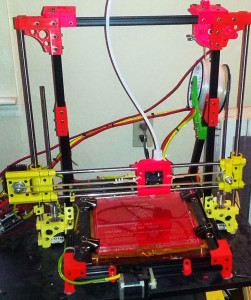
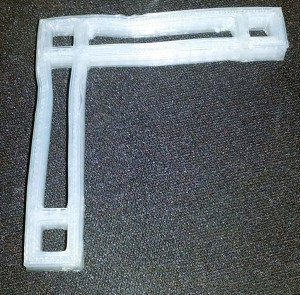
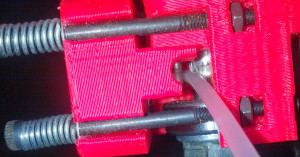
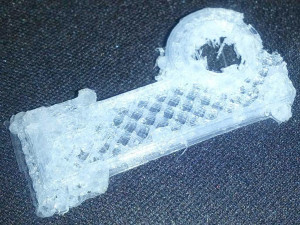
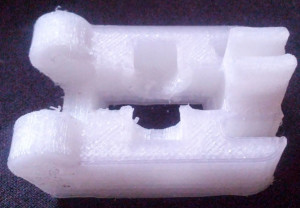
Leave a reply to Taulman Bridge 3D Printer Filament Review